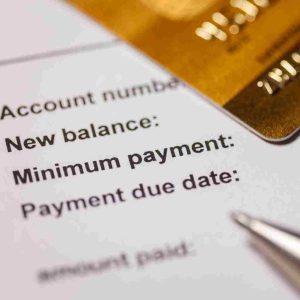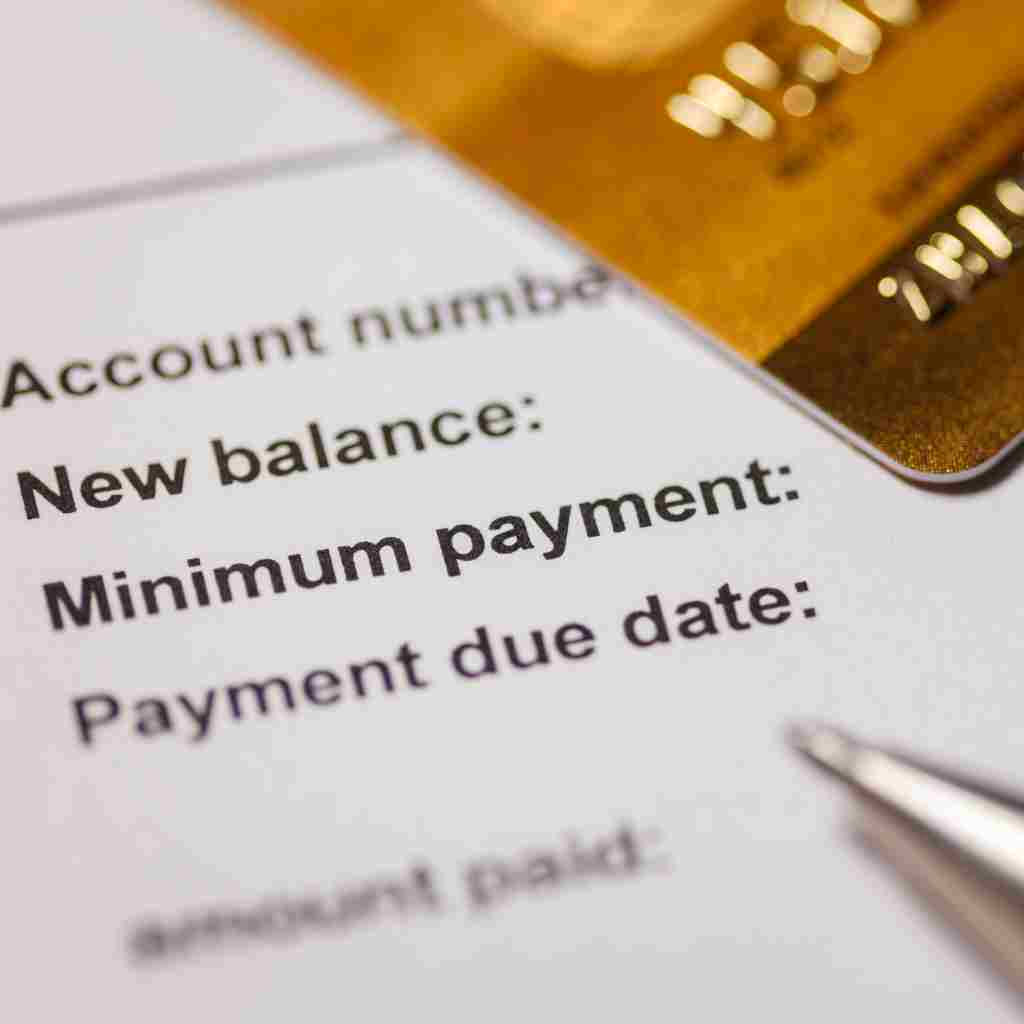
Making Minimum Payments?
Here’s What You Need to Know
At Rocketship Financial, we help people make smarter financial choices. Our goal is to launch your future forward—not hold you back. Only making the minimum payment each month can slowly eat away at your finances.
If you’ve ever looked at your credit card bill and thought, “Whew, at least I can just pay the minimum,” you’re not alone. Minimum payments might keep your account in good standing today. But over time, they can trap you in debt for years and cost you hundreds—or even thousands—in interest.
In this article, we’ll go over what happens when you only make minimum payments on your existing debts. We’ll also show you how to take back control of your financial future.
What Is a Minimum Payment?
Let’s start with the basics.
The minimum payment is the lowest amount you have to pay on your credit card each month. It keeps your account in good standing and helps you avoid late fees. Card issuers usually calculate it as a small percentage of your total balance—often between 1% and 3%. They also add in any interest and fees.
For example, if you owe $3,000 on a credit card with a 20% APR, your minimum payment might only be 2% of the balance. That means you must pay just $60. Sounds manageable, right?
But here’s the catch: most of that $60 goes straight to interest, not to the balance you owe. Which means you’re barely chipping away at your debt.
The Real Cost of Minimum Payments
Suppose you owe $5,000 on a credit card with a 20% APR and make only the 2% minimum payment each month.
- Month 1: You pay $100
- Interest eats up roughly $83 of that
- Only $17 goes toward your balance
At that rate, it could take more than 30 years to pay off the full balance—and you’d end up paying over $10,000 in interest alone.
This is how credit card companies make their money. They bank on you paying the minimum, because it keeps you in a cycle where they keep collecting interest every single month.
Why the Minimum Feels Safe (But Isn’t)
We get it: when money is tight, making the minimum payment feels like a lifeline. It’s the easiest way to keep up with your credit card bills without adding more stress to your already busy budget.
Minimum payments help you manage bills, rent, groceries, and all the other expenses life throws your way. Plus, making the minimum keeps your account in good standing with your lender, so you avoid late fees and penalties.
But that sense of safety can quickly become a trap. Making minimum payments might give you some short-term relief, but it doesn’t fix the problem — it just puts it off for later. Meanwhile, interest continues to build, increasing the total amount you’ll owe and making it take much longer to become debt-free. Over time, paying only the minimum can cost you hundreds or even thousands more in interest than you expect.
Your Credit Score Takes a Hit, Too
Making the minimum might protect your account from late fees. However, it doesn’t improve your credit use ratio, which is a major factor in your credit score.
Credit use is the percentage of your available credit that you’re using. Ideally, you want to keep this below 30%. So if you have a $10,000 limit and you’re carrying a $7,500 balance, you’re using 75% of your credit—which can hurt your score.
A lower credit score can lead to higher interest rates on loans. Lenders may deny your applications and limit your financial opportunities.
How to Break the Minimum Payment Cycle
If you’re feeling stuck, you’re not alone—and you do have options. Here are a few ways to break the cycle:
1. Consider Debt Consolidation
At Rocketship Financial, we help people roll multiple high-interest debts into one lower-interest personal loan. That means one monthly payment, a lower interest rate, and a clearer path to freedom.
2. Pay More Than the Minimum
Even adding $25, $50, or $100 to your monthly payment can make a huge difference. The more you pay, the less interest you’ll rack up.
3. Try the Avalanche or Snowball Method
- Avalanche: Focus on the card with the highest interest rate first while making minimum payments on the rest. Pay off the first balance, then move to the next.
- Snowball: Focus on the smallest balance first. It builds momentum and keeps you motivated.
4. Automate Your Payments
Set up auto-pay for more than the minimum, so you’re always making progress without having to think about it.
5. Track Your Spending
Awareness is powerful. The more you know about where your money is going, the easier it is to find room to put toward your balance.
The Snowball Effect
Another danger of making minimum payments? This method is easy to fall into a pattern where your balance keeps growing.
- You charge $200 for groceries
- You pay the $100 minimum
- $150 in interest is added next month
- Now you owe more than you did before you made your payment
This method is like emptying a sinking boat with a teaspoon. You’re making an effort, but the water’s rising faster than you can scoop it out.
The Avalanche Effect
Making only minimum payments doesn’t just slow your progress—it can keep you stuck in a cycle of growing interest.
- You charge $200 for groceries
- You pay the $100 minimum
- High interest adds $150 the next month
- Now you owe more than before you paid
This is like trying to outrun an avalanche uphill. You’re moving, but the debt keeps coming faster—and growing heavier.
A Better Path Forward
Sticking to minimum payments might feel like the safer option—but over time, it keeps you stuck in a cycle of debt. Interest piles up, progress slows down, and your balance barely moves.
Is Debt Consolidation a good idea? Debt consolidation gives you a smarter way forward. At Rocketship Financial, we help you combine your credit card debt into one fixed, lower-interest single loan. This makes it easier to pay off debt faster, save money, and simplify your finances.
Instead of juggling multiple payments, you’ll have one clear path to freedom. Our debt solutions lower your interest rates and simplify your monthly payments. The goal is to help you become debt-free in just 24–48 months.
🚀 Ready to make your move?
Rocketship Financial makes it easy to explore your loan options—with no impact on your credit score. Our fast, secure process helps you compare rates, choose the right solution, and finally take control of your debt.
✅ Lower your interest
✅ Combine multiple payments into one
✅ Take control of your finances faster
👉 Check your offer today at RocketshipFinancial.com or call 800-522-7766 to speak with a loan specialist
About Rocketship Financial
From personalized loan options and debt consolidation solutions to transparent support every step of the way, we help thousands of customers accelerate toward their goals—on their terms.
At Rocketship Financial, we believe financial freedom should be accessible, fast, and built around your life. That’s why we provide a seamless online experience, competitive rates, and a commitment to service that puts your needs first.
Looking for a smarter, simpler way to fund your future?























